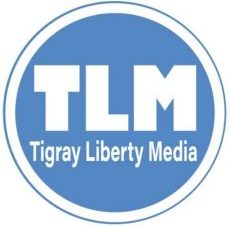[By Tigray Media Watch (TMW) Digital Intelligence Monitoring Group]
Introduction
The Tigray People’s Liberation Front (TPLF) has shaped Ethiopian and Tigrayan politics for nearly five decades. However, its legacy is marked by strategic failures, betrayals, and policies that prioritised external interests—most notably as a defender of Eritrean independence and sovereignty—at the expense of Tigray’s national interests.
This document critically evaluates the TPLF’s historical trajectory, its role in enabling Eritrea’s secession, its complicity in the Tigray genocide, and its continued dominance despite its catastrophic political system failures.
The analysis underscores the urgent need to replace TPLF’s outdated political ideology with a modern framework focused on democracy, security, and sustainable development for Tigray’s future.
Historical Overview of TPLF’s Rise and Political Trajectory
Founded in 1975, the TPLF began as a revolutionary movement aimed at liberating Tigray from marginalisation under Ethiopian rule. It waged a prolonged guerrilla war against the Derg regime, ultimately seizing power in 1991.
Key Milestones:
- 1975–1991: Armed struggle against the Derg regime.
- 1991: Overthrow of the Derg and establishment of the Ethiopian People’s Revolutionary Democratic Front (EPRDF).
- 1993: Eritrean independence facilitated under TPLF leadership.
- 1998–2000: Ethio-Eritrean border war, exposing TPLF’s strategic miscalculations.
- 2000–2018: Federal dominance marred by corruption and authoritarian practices.
- 2018–Present: Loss of federal power, resurgence of Tigrayan resistance, and the Tigray genocide.
Despite its revolutionary origins, TPLF gradually shifted its focus toward consolidating federal authority, often at the expense of Tigray’s welfare, security, and strategic interests.
The Betrayal of Tigray’s National Interests
- TPLF’s Prioritisation of Eritrean Interests
- Among the most profound betrayals was TPLF’s advocacy for Eritrean independence, which jeopardised Tigray’s geopolitical and economic stability.
Key Actors:
- Sebhat Nega and Meles Zenawi: Advocated for Eritrean independence, disregarding its long-term implications for Tigray’s security and economic prospects.
- Federal Policies: Focused on Ethiopian and Eritrean reconciliation, sidelining Tigray’s territorial and strategic interests.
Consequences:
- Loss of access to strategic coastal routes.
- Weakening of Tigray’s economic and military position.Empowerment of Eritrea’s authoritarian regime, which later played a pivotal role in the Tigray genocide.
TPLF’s Role in Enabling Eritrean Independence at the Expense of Tigray
TPLF’s decision to support Eritrea’s secession revealed a critical lack of strategic foresight. By prioritising Eritrean interests, TPLF left Tigray vulnerable to future hostilities.
Key Missteps:
- 1991–1993: Advocating Eritrean independence without securing guarantees for Tigray’s access to trade routes and resources.
- 1998–2000: Mishandling the border war with Eritrea, leaving territorial disputes unresolved.
- Post-War Era: Failing to strengthen alliances, leaving Tigray isolated and vulnerable.
Impact on Tigray:
- Marginalisation in Ethiopian politics.
- TPLF leadership strategic failure, isolation and exposure to Eritrean aggression.
- Invasion and atrocities during the 2020–2022 Tigray War.
Political Miscalculations and Strategic Failures
Despite decades in power, TPLF failed to adapt to shifting political dynamics, leaving Tigray vulnerable to internal and external threats.
Key Failures:
- Authoritarian Governance: Suppressing dissent rather than fostering democratic reforms.
- Corruption and Nepotism: Undermining internal cohesion and alienating allies.
- Failure to Defend Tigray: Underestimating threats posed by Eritrea and Ethiopian federal forces.
- Blind Trust in Peace Agreements: Entering agreements like the Pretoria Agreement without securing long-term protections for Tigray.
TPLF’s Complicity in the Tigray Genocide
The 2020–2022 Tigray War exposed the devastating consequences of TPLF’s political miscalculations. Eritrean and Ethiopian forces committed atrocities, enabled by decades of TPLF’s misguided policies.
Contributing Factors:
- TPLF leadership strategic failure and isolation due to earlier betrayals.
- Weak military preparedness.
- Failure to build alliances and defensive infrastructure.
- The genocide represents not only external aggression but also internal betrayal by TPLF leaders who neglected Tigray’s security for decades.
Current Challenges and Existential Threats
Even after the Tigray War, TPLF’s leadership remains entrenched, prolonging instability and mistrust. Their refusal to relinquish power continues to hinder Tigray’s recovery.
Imminent Threats:
- Political Stagnation: Outdated ideology disconnected from modern realities.
- Corruption and Division: Internal rivalries weakening collective action.
- Vulnerability to External Forces: Continued dependence on Eritrea and lack of regional alliances.
The Need for Political Transformation in Tigray
A comprehensive political transformation is vital for Tigray’s recovery. Reform must focus on democratisation, security, and economic resilience.
Recommendations for a Post-Genocide Tigray
1. Political Reform:
- Establish a democratic multi-political framework.
- Prohibit authoritarian practices rooted in TPLF’s legacy.
- Separate political party and government structures.
- Promote good governance.
- Develop anti-corruption law.
2. Security and Defense:
- Build a professional, independent Tigray Defense Force.
- Strengthen regional alliances to deter aggression.
3. Economic Recovery:
- Rebuild Tigray’s education and healthcare.
- Develop infrastructure and industrial hubs.
- Allow the diaspora to fully participate in Tigray’s economic and social developments.
- Secure alternative trade routes.
4. National Unity:
- Promote reconciliation through a Tigray National Reconciliation Commission (TNRC).
- Engage youth and marginalised groups in governance.
5. International Advocacy:
- Mobilize global support for reconstruction.
- Document and prosecute war crimes through international courts.
Conclusion
The TPLF’s legacy is one of betrayal, strategic failures, and devastation. Its prioritisation of Eritrean interests over Tigray’s survival has left the region vulnerable to genocide, political, economic and societal ruins.
Tigrayans must now unite to reject TPLF’s outdated ideology and embrace a new era of democratic governance, security, political, economic and social resilience.
By learning from past mistakes and prioritising strategic foresight, Tigray can rebuild and safeguard its future in an increasingly volatile geopolitical environment.
